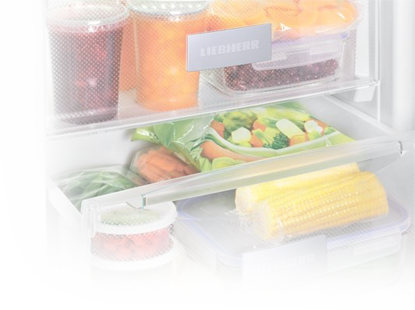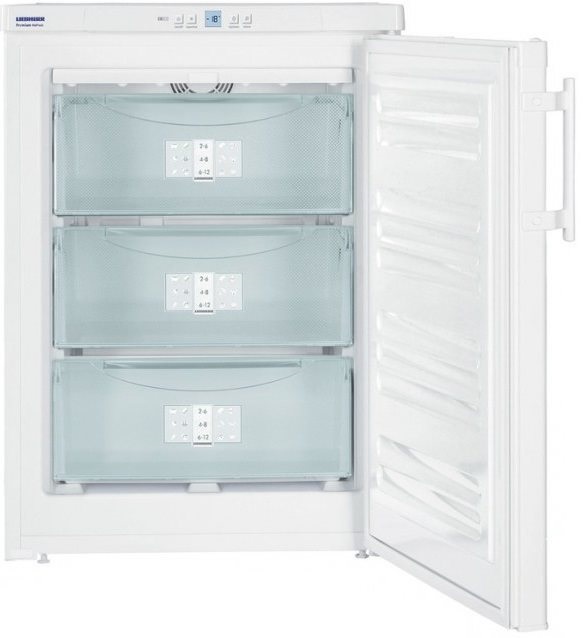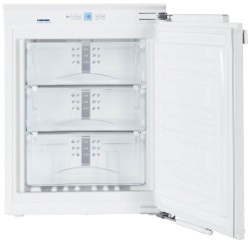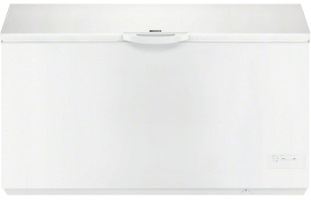How To Choose a Freezer
Are you in the market for a freezer and wondering whether to choose a classic upright freezer which opens from the front or a chest freezer which opens from above? What does super freezing mean, what capacity of freezer should you choose and where is the best place to put your freezer? This guide will answer everything and advise you on how to choose the freezer which will be best for you.

A few tips for choosing a freezer
Upright freezers are suitable for households. Chest freezers are used more by restaurants.
Choose the size of the freezer according to how much and how big the food you will freeze is.
Before buying a freezer, carefully measure the space where the freezer will be located.
Basic parameters for freezer selection
Volume
The most basic parameter to consider when choosing a freezer is volume. Choose a freezer which you will fill to its max capacity, as buying too large a freezer which you will only fill halfway does not make sense economically.
For normal use, the minimum is 40-60 liters per person. However, if you consume more meat, fish or vegetables, choose 80 liters or more per person.
Power consumption
The electrical class expresses the power consumption of the appliance. The least economical freezers are marked G, the most economical A++ or even better A+++. A+ and A are also suitable for normal use. As freezers are in operation 24 hours a day, this is a key parameter and it pays to choose the most economical model possible. The difference in annual consumption between individual classes can be in the thousands of CZK.
| Energy class | Annual consumption in kWh | Costs in CZK / day | Costs in CZK / year |
|---|---|---|---|
| A++ | 145 | 1,90 | 696 |
| A+ | 175 | 2,30 | 840 |
| A | 205 | 2,70 | 984 |
Calculated with the price of CZK 4.80 / kWh.
Freezing capacity and freezing class
Freezing capacity indicates how many kg of food the freezer is able to freeze at -16 ° C / -18 ° C in 24 hours. The more kilograms, the faster the freezer freezes. Normal values range from 4 to 40 kg.
The freezing class is marked with asterisks and determines the quality of the freezing process. That is, at what minimum temperature can the freezer freeze food. The most suitable temperature for storage is -18 ° C.
| Freezing class | Freezes to temperature |
|---|---|
| * | -6 °C |
| ** | -12 °C |
| *** | -18 °C |
| **** | -24 °C |
Accumulation time
Accumulation time tells us how long food will remain frozen in the event of a power failure. It ranges from a few hours to several days. For conventional freezers, it is 15 hours or more.
Climate class
The climate class is marked with the abbreviations T, ST, N, SN and indicates what is the optimal outdoor temperature for the proper operation of the freezer. It can’t be placed just anywhere.
For example: The T-freezer is tailor-made for tropical environments. It reliably freezes in ambient temperatures from 18 ° C. If you place such a freezer in a utility room where it is 10 ° C, its consumption will increase and its service life will be reduced due to improper use. For low ambient temperatures, choose a freezer marked SN.
Energy consumption for freezer operation also increases with increasing ambient temperature. Therefore, it should never be placed near a heater, nor in a room at room temperature.
| Climate class | Náme | Outdoor temperature range |
|---|---|---|
| T | Tropical | 18-43 °C |
| ST | Subtropical | 18-38 °C |
| N | Normal | 16-32 °C |
| SN | Subnormal | 10-32 °C |
If the freezer has more than one climate class, it works reliably in both temperatures. E.g. freezers with SN-N-ST class work from 10–38 ° C.
Noise
Low noise is especially desirable when placing a freezer in a room where we often spend time. The pleasant range is 36 – 43 dB, but beware of irregular sounds that the freezer makes. The most suitable location is a utility room, garage, cellar, etc.
Function
If you do not want to undergo unpleasant manual defrosting, choose a freezer with the NoFrost or FrostFree system (the name of the function varies depending on the manufacturer). It works on a system of constant air circulation, which reduces humidity, ideal distribution of cold and elimination of over-icing.
Fast or super freezing (you can also find it called SuperFrost or Super Freeze) can sharply reduce the temperature for a short time and thus maintain the desired value when placing new food in the freezer, for example after a large purchase. This ensures high-quality freezing of newly stored food and at the same time prevents thawing of already frozen food. Depending on the amount of food added, the function must be activated in advance.
The display is used to display or set the freezing temperature or to activate the quick freeze function.
The key lock is usually located on the handle and is useful if the freezer is located in common areas and you do not want anyone else to have access to the food.
Warning sign
An audible or visual signal that warns when the temperature is high or the door is open / not closed properly. This feature is useful, for example, in families with small children.
Upright freezers are the most common choice for households, but they can also be used in restaurants and shops. They provide easy access to food and, compared to chest freezers, have a much clearer internal layout. They are mainly suitable for freezing small and medium-sized pieces of food, such as fruits, vegetables, frozen semi-finished products, sliced meat and more. In addition, the upper part of the freezer will serve as storage space. Upright freezers are manufactured in various sizes, so you can choose from a wide range of capacities.
If you want your home to maintain its aesthetic, choose a built-in freezer. It is possible to hide them in a cabinet, and thus preserve the appearance of your house or apartment. When choosing a built-in freezer, it is important to carefully measure the space in which you will then hide the appliance.
Chest freezers are mainly used by shops and restaurants, but you can also find them in the homes of passionate fishermen, hunters, ‘foodies’ and owners of large gardens. They can hold a much larger volume of food than cabinet freezers and are often more energy efficient thanks to better insulation. They open from the top, so nothing can fall out of them.
Frequently asked questions when choosing a freezer
How much capacity do I need?
A minimum freezer volume of 40 liters per person is recommended. Households which consume a large amount of frozen food should allow for 80 liters per person or more.
Upright or chest freezer?
For smaller households, such as ordinary flats, choose an upright freezer. They open from the front and access to food is easier than with chest freezers. However, the disadvantage is that they do not hold large pieces of meat or fish, etc., because they are simply not large enough.
Chest freezers however, provide enough storage space for large food items. However, they occupy a larger area, so they are only suitable for large apartments and houses. This type of freezer opens from above and the disadvantage is poorer access, especially to the bottom and especially when they are full. For this reason, we do not recommend this type of freezer to seniors and people of smaller stature.
Where best to place my freezer?
If you have the opportunity, place the freezer either in your utility room, garage or cellar. Conversely, never place the freezer in a room where a higher temperature is maintained, (for example in a kitchen during cooking). The freezer only works properly in a certain temperature range, which is determined by its climate class (T, ST, N, SN). Outside the specified temperature, its energy consumption will rise and its service life will be shortened. Also due to noise, it is ideal to place the freezer in a place where you won’t stay for a long time.
Glossary - freezers
Climate class
A freezer’s climate class is expressed by the abbreviations T, ST, N, SN and indicates what the optimal temperature of the freezer’s immediate environment should be. If the ambient temperature is outside the recommended range, its power consumption increases and it may not work properly. If the freezer has more than one climate class, this means it works properly over the entire temperature range. For example,a freezer with a SN-N-ST climate class operates in an environment with a temperature of 10–38 ° C.
T - 18-43 °C
ST - 18-38 °C
N - 16-32 °C
SN - 10-32 °C
Super freezing
The super-freeze function can sharply reduce the temperature for a short time and thus maintain the desired temperature when new food is placed in the freezer. This ensures high-quality freezing of newly stored food and at the same time prevents melting of already frozen food. Depending on the amount of food added, the function must be activated several hours in advance.
The function name varies depending on the manufacturer. You may also come across it being called SuperFrost.
Accumulation time
Freezer accumulation time means that food remains frozen for a set period of time, even in the event of power failure.
Glossary


